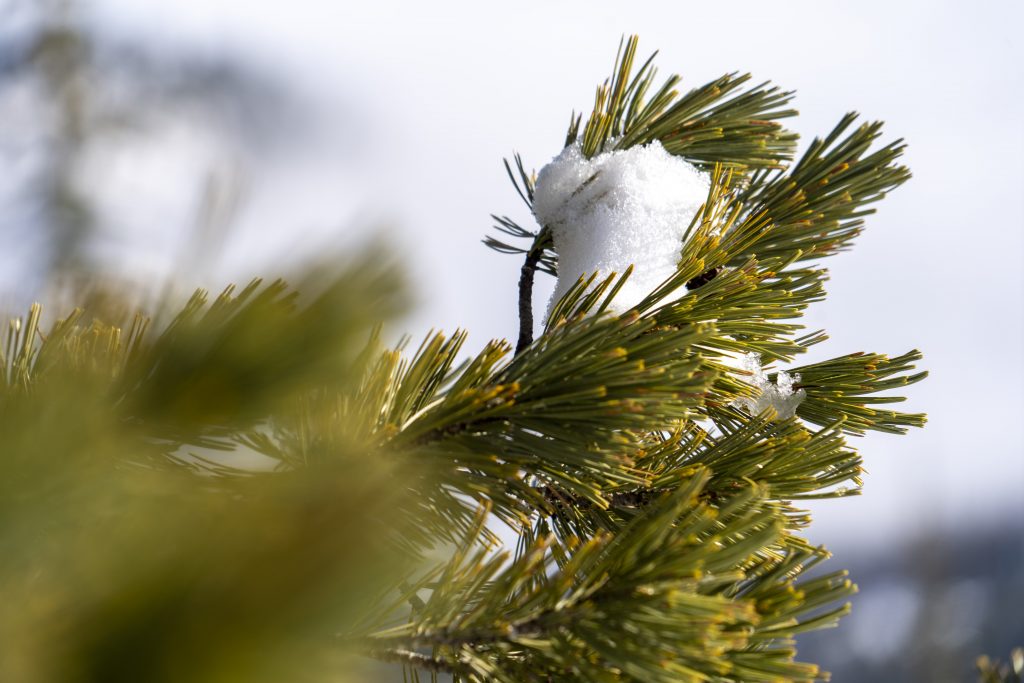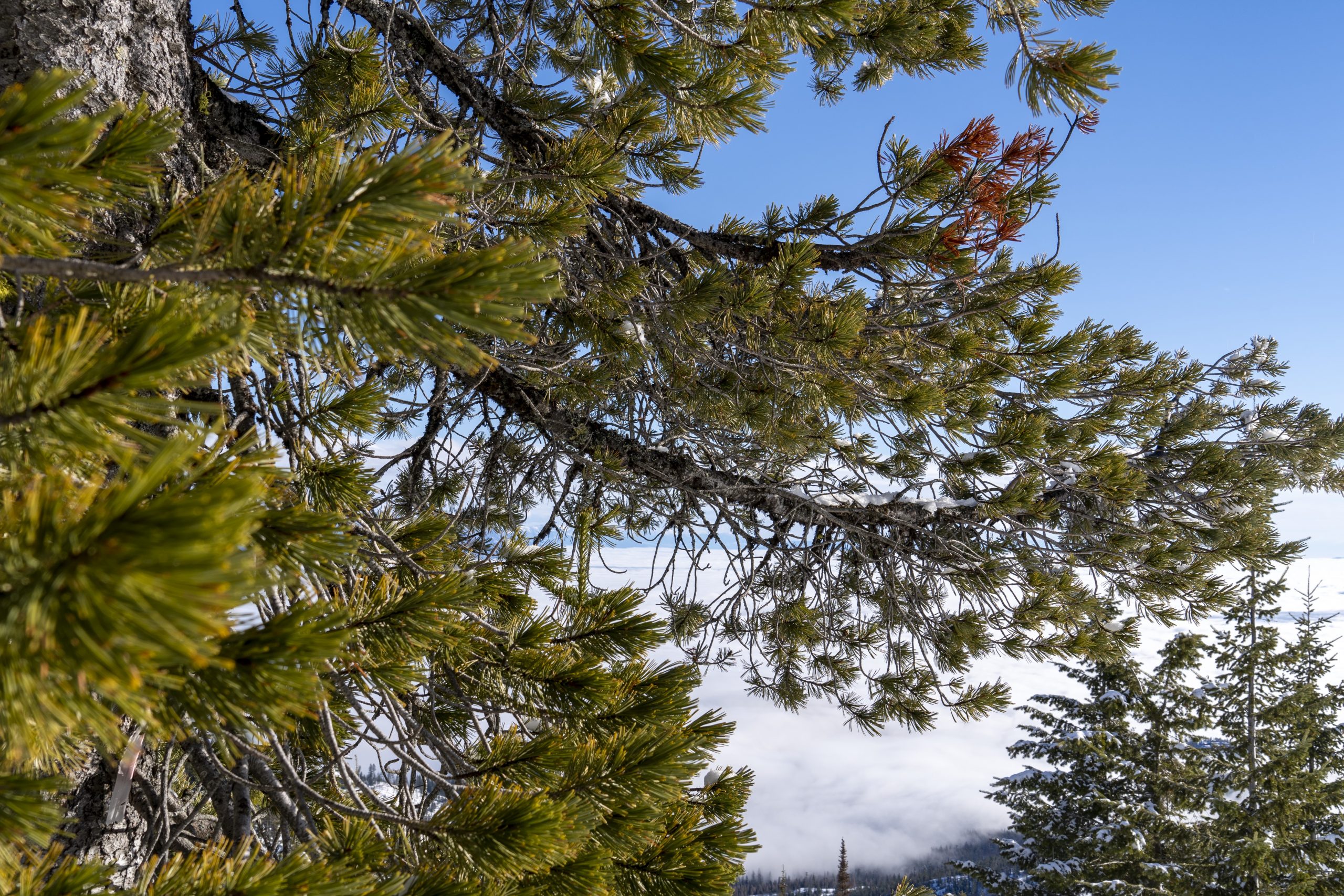Whitefish Mountain Resort is certified as a Whitebark Pine Friendly Ski Area. To learn more, visit whitebarkfound.org.
The next time you're hiking or skiing among the thousands of evergreen trees at Whitefish Mountain Resort, look around and you might notice one that looks different from the rest — a whitebark pine.
With gnarled, light gray bark and upswept branches that spread into large, shrubby canopies, whitebark pines often tower over neighboring trees such as subalpine firs. A sure way to identify a whitebark pine is by looking at its needles, which are arrayed in distinctive clusters of five.
The whitebark pine plays a critical role in mountain ecosystems. It's regarded as a keystone species because it supports many other plants and animals, including red squirrels, grizzly bears and, in particular, a species of bird called the Clark's nutcracker — all of which feed on calorie-dense whitebark pine seeds. The trees' roots help stabilize slopes, and their long shadows help retain snowpack, contributing to the health of watersheds. Smaller trees and other plants thrive in the sheltered spaces beneath whitebark canopies.
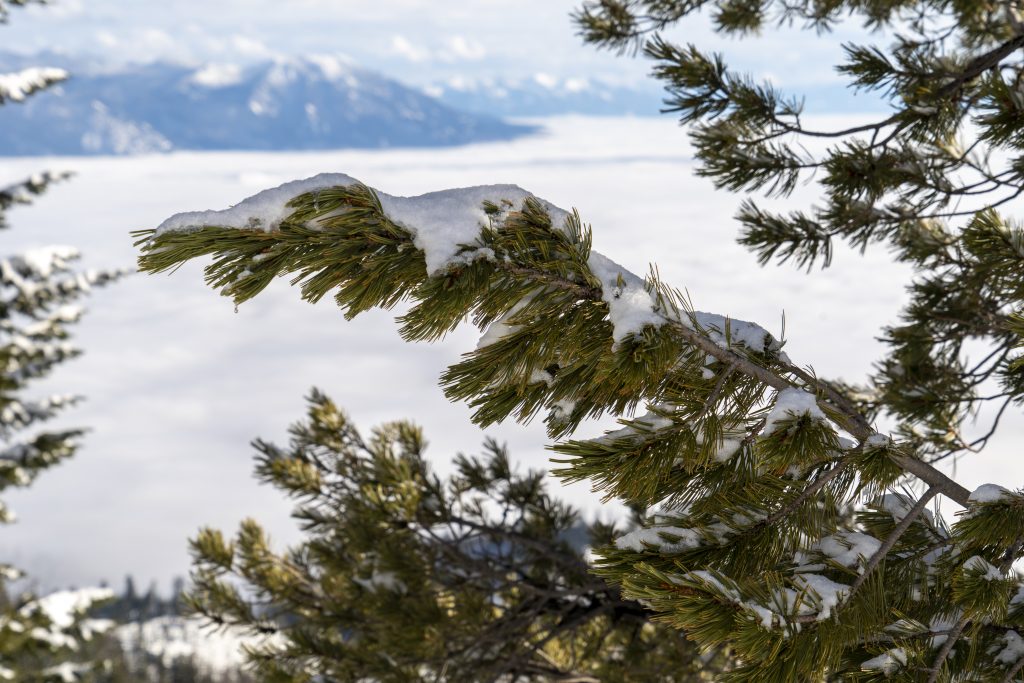
Whitebark pines are hardy, long-living trees. Some have survived for hundreds of years with roots clinging to rocky, wind-beaten mountainsides across the Northern Rockies and Western Canada. But many more have disappeared.
"These majestic pines are in peril," says the Whitebark Pine Ecosystem Foundation, a nonprofit based in Missoula. "Trees with reddening dead foliage or lifeless gray skeletons replace the greenery, squirrel and nutcracker activity."
The species is under threat by climate change, increasingly destructive wildfires, infestations of mountain pine beetles and an invasive, slow-killing fungus known as white pine blister rust, which turns the needles reddish brown and produces unsightly cankers on the trees' branches. Over half of all whitebark pines have died, and in some parts of the species' historical range — including our corner of the Northern Rockies — the mortality rate is up to 95%.
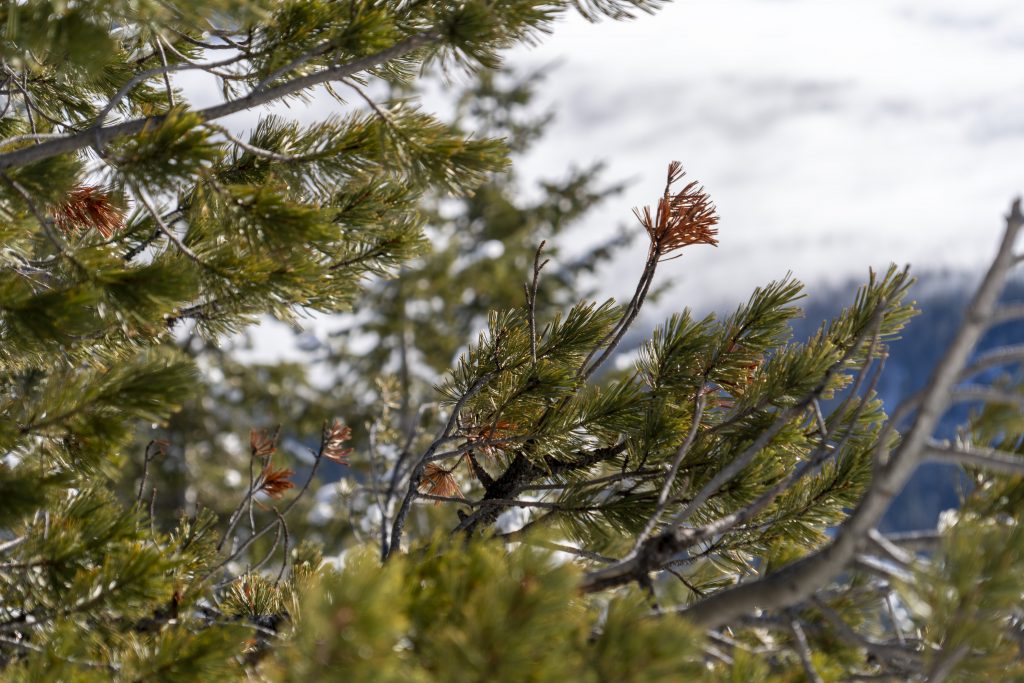
The whitebark pine was listed as threatened under the U.S. Endangered Species Act in late 2022, though scientists have recognized these threats for decades and have gone to great lengths to increase the species' odds of survival.
That's why Whitefish Mountain Resort is a proud partner of the Whitebark Pine Ecosystem Foundation, which promotes the conservation and restoration of whitebark pine and other high-elevation, five-needle white pines through education, outreach, research and collaborations. In 2016, we became the first ski resort in the nation certified by the foundation as a Whitebark Pine Friendly Ski Area.
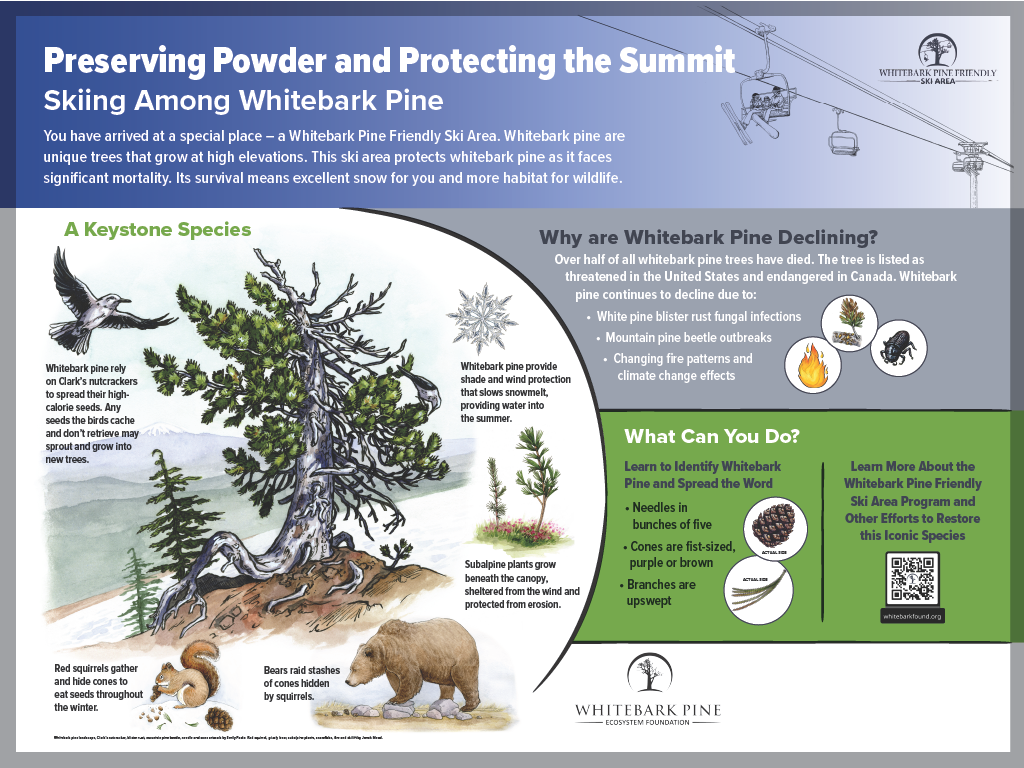
"Whitebark pines are a precious natural resource and we all depend on them for our way of life, whether we're skiing through glades in the winter or glimpsing wildlife from a hiking trail in the summer," Whitefish Mountain Resort President Nick Polumbus said. "We're proud to do our part and grateful for our partners at the U.S. Forest Service and the Whitebark Pine Ecosystem Foundation who have led the way in efforts to protect this keystone species."
Since the 1990s, Forest Service researchers have been working to identify individual whitebark pines that exhibit genetic resistance to blister rust, dubbed "plus trees." Seeds from those trees are collected and sent to a nursery in Coeur d'Alene, Idaho, where they are planted and grown into foot-tall seedlings. Those seedlings, in turn, are replanted across national parks and forests with the goal of replenishing wild populations of whitebark pine.
Big Mountain, most of which is part of the Flathead National Forest, is one of many sites where whitebark seeds have been collected and replanted. The collection process involves climbing trees in the spring to place a wire-mesh cage over each cone, which protects the scarce seeds from being eaten by nutcrackers. The cones are retrieved once they reach maturity in late summer to be sent to the nursery. So if you ever notice some odd-looking pouches adorning the treetops while riding up Chair 1 in the summer, now you know they're an important tool in a major conservation effort!
More information about whitebark pine, the foundation and its ski area certification program can be found at whitebarkfound.org. You can also visit the Summit Nature Center on the lower level of the Summit House to learn all about our native flora and fauna.
